Welcome to our blog, where we explore the exciting world of minimalist web design and its potential to transform the online experience for creatives. Whether you are an artist, photographer, writer, or designer, minimalist web design offers a clean and sophisticated aesthetic that enhances your work and captivates your audience.
Minimalist web design is more than just a trend; it is a philosophy that embraces simplicity and functionality. By stripping away unnecessary elements, minimalist website design creates a focused and intuitive user experience. The result is a visually stunning and highly functional website that allows your creative work to take center stage.
With minimalist web design, less is more. By eliminating clutter and distractions, your website becomes a canvas for your creativity, allowing your work to shine. Whether you are showcasing your portfolio or selling products, minimalist web design ensures that every element serves a purpose and contributes to the overall user experience.
Are you ready to unlock the true potential of your creativity? Join us as we explore the principles, benefits, and successful implementation of minimalist web design. Discover how this design approach can elevate your work and leave a lasting impression on your audience.
Key Takeaways:
- Minimalist web design emphasizes simplicity and functionality
- Minimalist design creates a clean and uncluttered user experience
- Less is more – every element serves a purpose in minimalist web design
- Minimalist design allows your creative work to take center stage
- Unlock your creativity with minimalist web design and leave a lasting impression on your audience
The Power of Simplicity in Web Design
In the fast-paced digital world, simplicity is the key to success. When it comes to web design, minimalism is a popular trend that continues to dominate the industry. With minimalist web design, we focus on clean lines, ample white space, and a streamlined user interface that maximizes the user experience.
One of the most significant benefits of simplicity in web design is the improved user experience it offers. A simple, clean design makes it easy for users to navigate the website and find the information they need. Gone are the days of cluttered and confusing layouts that overwhelm visitors. Minimalism brings clarity and ease of use, allowing users to effortlessly interact with your website.
Moreover, simplicity in web design also contributes to faster load times, which is crucial in today’s fast-paced digital landscape. With minimalist design, there are fewer elements to load, resulting in quicker page load speeds. This not only enhances the user experience but also improves your website’s performance in search engine rankings.
A minimalist web design also allows for a stronger focus on content. By reducing distractions and unnecessary elements, your content takes center stage, capturing users’ attention and driving engagement. Whether you want visitors to read an article, make a purchase, or sign up for a newsletter, a simple web design ensures that your desired call-to-action stands out.
Brands Inspiring Minimalist Web Design
“Simplicity is the ultimate sophistication.” – Leonardo Da Vinci
Many brands and businesses have embraced minimalist design to create visually stunning and user-friendly websites. Let’s explore a few examples of brands that inspire minimalist web design:
- Apple: Known for its clean and sleek aesthetic, Apple’s website showcases minimalist design at its finest. With minimal text, plenty of white space, and high-quality visuals, Apple focuses on showcasing its products and enhancing the user experience.
- Google: Google’s minimalist homepage is a testament to the power of simplicity. With a single search bar, users can easily find what they’re looking for without any distractions. Google’s minimalist approach highlights the company’s commitment to delivering quick and relevant search results.
- Nike: Nike’s website embraces minimalism with bold imagery, simple typography, and a clean layout. By using minimalist design, Nike allows its products to take the spotlight, inspiring visitors and creating a seamless shopping experience.
These brands understand that minimalism is not just a trend, but a timeless design philosophy. By embracing simplicity, they have created websites that captivate and inspire while providing a user experience that is both intuitive and visually appealing.
| Benefits of Minimalist Web Design | Examples |
|---|---|
| Improved user experience | Apple |
| Faster load times | |
| Focus on content | Nike |
Principles of Minimalist Web Design
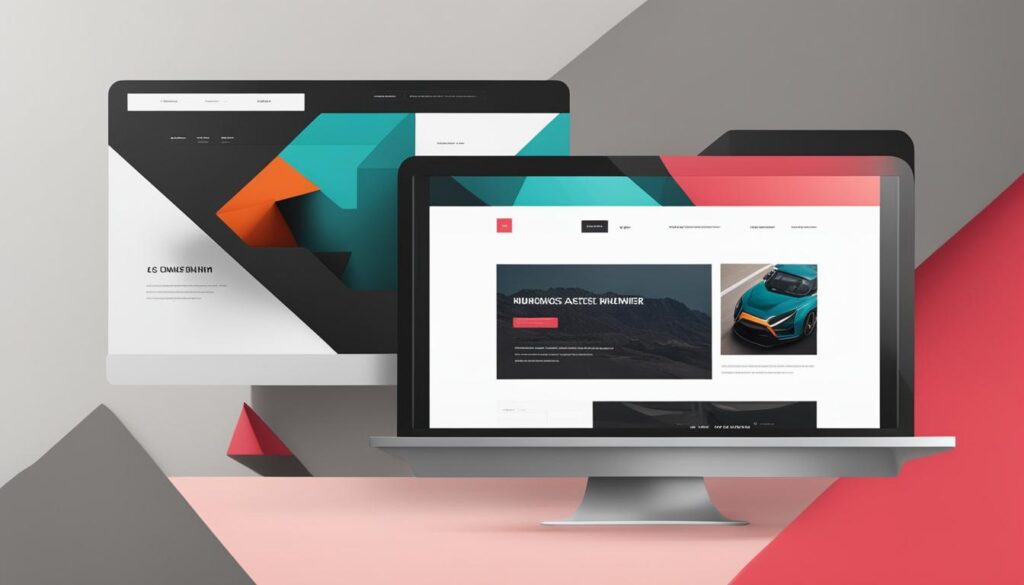
In order to create visually appealing and highly functional minimalist websites, it is important to understand and implement key principles of minimalist web design. These principles focus on simplicity, visual harmony, intuitive navigation, and effective use of typography. Let’s delve into each principle to gain a deeper understanding.
1. Use of White Space
The use of white space, also known as negative space, is a fundamental principle of minimalist web design. By strategically incorporating white space, designers can create a clean and uncluttered look, allowing the important elements on the page to stand out. White space provides breathing room for users, making the website more visually appealing and easy to navigate.
2. Limited Color Palette
A limited color palette is another key principle of minimalist web design. By choosing a few carefully selected colors, designers can create visual harmony and maintain a cohesive aesthetic throughout the website. Minimalist designs often utilize neutral or monochromatic color schemes, emphasizing simplicity and elegance.
3. Simplified Navigation
Minimalism extends to the navigation of a website as well. A minimalist web design focuses on providing an intuitive and seamless user experience. Navigation menus should be simple, unobtrusive, and easy to understand. By streamlining the navigation, users can quickly find the information they need, enhancing their overall experience on the website.
4. Visual Hierarchy
Visual hierarchy is essential in minimalist web design. It helps guide users’ attention and directs them to the most relevant content or actions on the page. By utilizing size, color, and placement, designers can create a clear visual hierarchy that enhances the user experience and ensures that important elements are easily noticeable.
5. Typography
Typography plays a significant role in minimalist web design. Simple and readable fonts are preferred to maintain the clean and streamlined aesthetic. The font choice should complement the overall design and enhance readability. Well-executed typography adds an element of elegance and sophistication to minimalist websites.
By adhering to these principles, designers can create minimalist websites that are visually stunning, easy to navigate, and highly functional. The combination of white space, limited color palettes, simplified navigation, visual hierarchy, and thoughtful typography empowers designers to deliver exceptional user experiences while maintaining a clean, minimalist aesthetic.
Implementing Minimalist Web Design
When it comes to implementing minimalist web design, our aim is to create a visually stunning and user-friendly website that reflects your brand’s essence while providing an exceptional user experience. To achieve this, we follow a series of steps that ensure every element of the design is purposeful and effective.
Defining Content and Goals
The first step in implementing minimalist web design is defining the content of your website and determining its goals. By understanding what you want to achieve with your website, we can strategically plan its design to meet those objectives. Whether it’s showcasing your portfolio or promoting your products, our minimalist approach will ensure the focus remains on what matters most.
Eliminating Unnecessary Elements
In order to create a clean and streamlined design, we eliminate unnecessary elements that might distract or confuse your users. By removing excessive elements, we allow space for the essential components to shine. Our goal is to enhance the user experience by providing a clear and intuitive interface.
Simplifying the Layout
A crucial aspect of minimalist web design is simplifying the layout. We utilize ample white space and carefully align elements to create a visually pleasing aesthetic. By decluttering the design, we ensure that the user’s focus is solely on the core content, resulting in a more engaging browsing experience.
Choosing the Right Colors and Typography
The colors and typography used in your website design play a significant role in conveying your brand’s message and aesthetic. Our team selects a limited color palette that complements your brand identity while maintaining the minimalist aesthetic. Similarly, we choose simple and readable fonts that enhance the overall user experience.
Testing and Refining
Once the initial design is complete, we thoroughly test and refine it to ensure its effectiveness. This involves checking for any usability issues, optimizing load times, and fine-tuning the user interface. We believe that constant testing and refinement are crucial to delivering a flawless minimalist design that aligns perfectly with your brand and user expectations.
Implementing minimalist web design requires careful planning and attention to detail. With our expertise, we can create a minimalist web design that not only showcases your portfolio but also provides an immersive user experience. Let us simplify and elevate your online presence with our minimalist web design ideas and portfolio.
Common Misconceptions About Minimalist Web Design
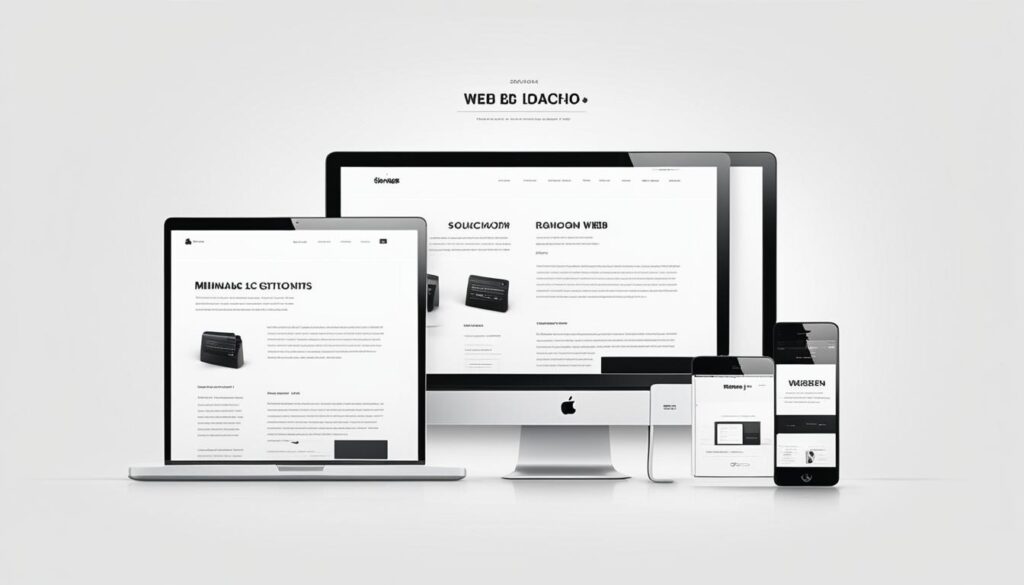
When it comes to minimalist web design, there are some common misconceptions that often arise. It’s important to dispel these myths and truly understand the beauty and creativity behind minimalist design. Let’s explore a few of these misconceptions:
-
Misconception 1: Minimalist design is boring.
Contrary to popular belief, minimalist design doesn’t have to be dull or uninspiring. In fact, it can be vibrant, visually stunning, and deeply engaging. By carefully choosing the right elements and focusing on simplicity, minimalist design allows for a powerful visual impact that captivates users. It’s all about finding the perfect balance of minimalism and creativity.
-
Misconception 2: Minimalism means no creativity.
Some people assume that minimalism restricts creativity. However, the opposite is true. Minimalist design can actually enhance creativity by challenging designers to be more thoughtful and intentional in their choices. With limited elements to work with, designers must carefully consider each element’s purpose and impact. This encourages innovative thinking and pushes designers to create designs that are visually captivating while remaining functional.
The Beauty of Minimalist Web Design Examples
To truly grasp the beauty and creativity behind minimalist web design, let’s take a look at some inspiring examples:
| Website | Description | Image |
|---|---|---|
| Apple | Apple’s website is a perfect example of minimalist design. The clean layout, use of white space, and focus on product imagery create a visually stunning and user-friendly experience. | |
| Aesop | Aesop’s website showcases minimalist design with its sophisticated use of typography, minimal color palette, and attention to detail. The design complements the brand’s identity and creates a serene browsing experience. | 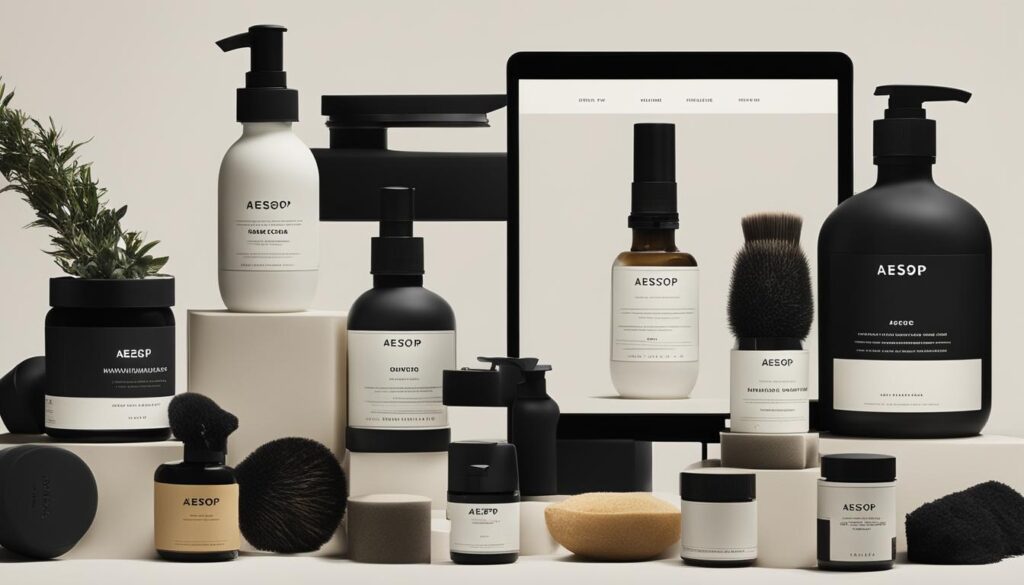 |
| Nike | Nike’s website embraces minimalism while maintaining a sense of energy and dynamism. Through the clever use of typography, bold imagery, and simple navigation, the design captures the essence of the brand. | 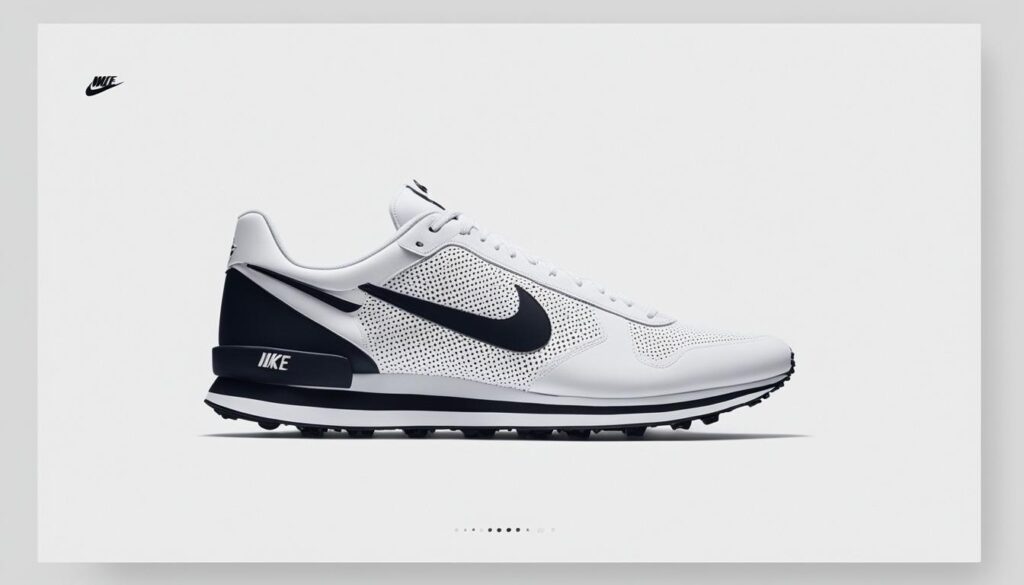 |
These examples demonstrate that minimalist web design is far from boring and devoid of creativity. Instead, it showcases the power of simplicity and intentional design choices to create visually stunning and engaging websites. By dispelling these misconceptions and exploring inspiring examples, we can appreciate the beauty and creativity that minimalist web design has to offer.
Unraveling the Mysteries of Minimalist Web Design
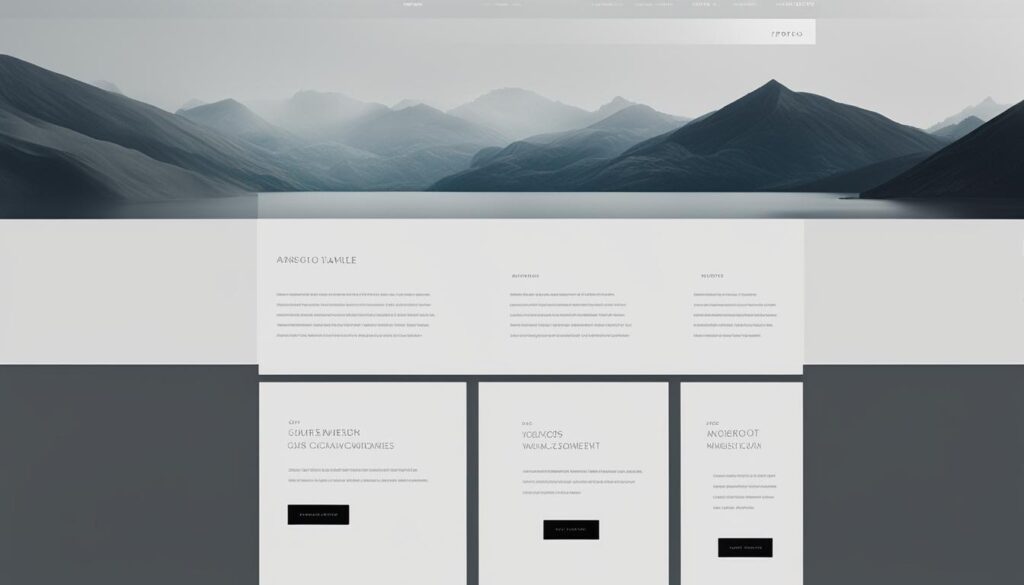
Minimalist web design is defined by its emphasis on simplicity and functionality. It seeks to eliminate unnecessary elements and focus on what truly matters, creating a clean, streamlined, and efficient user experience. The philosophy behind minimalism in web design is “less is more”. This approach prioritizes functionality and usability, ensuring that every element serves a purpose and contributes to the overall user experience.
Key elements of minimalist web design include:
- A limited color palette: Using a carefully selected color scheme helps create a cohesive and harmonious visual experience. Minimalist websites often opt for neutral or monochromatic colors to maintain a clean and uncluttered look.
- Typography: Minimalist designs make use of simple and readable fonts that complement the overall aesthetic. Typography plays a crucial role in enhancing readability and conveying the intended message to users.
- Plenty of white space: White space, also known as negative space, refers to the empty areas between elements. It helps create a sense of balance, highlights key elements, and improves overall readability.
- Focus on functionality: Minimalist web design prioritizes functionality and usability. Every element should serve a purpose and contribute to the user experience, eliminating any unnecessary clutter that may distract or confuse users.
By incorporating these elements into their designs, web designers can create minimalist websites that are visually appealing, easy to navigate, and highly functional.
The Philosophy Behind Minimalism
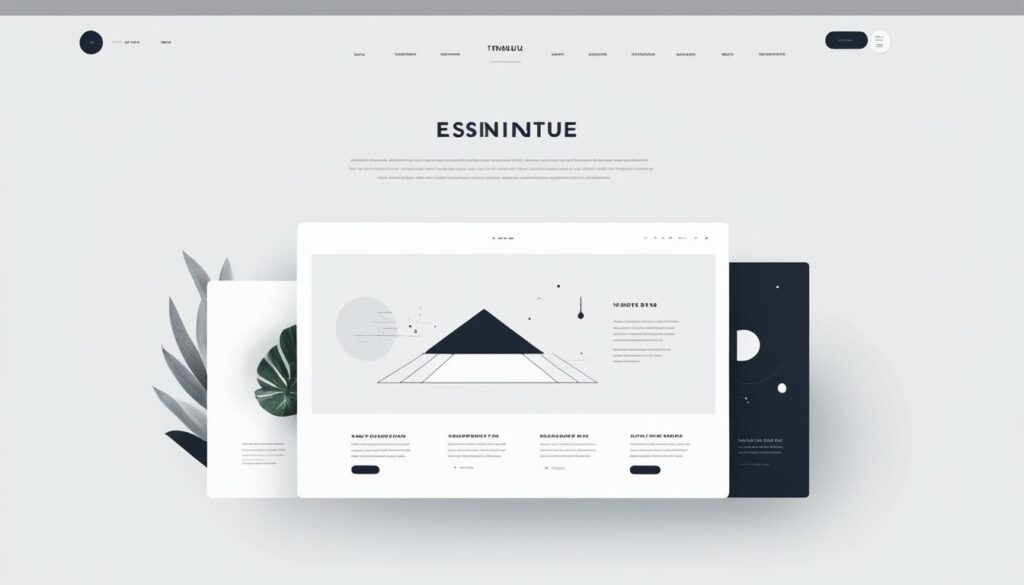
When it comes to minimalist web design, the philosophy is simple: “less is more.” This design approach is not about creating barren or uninspiring websites. Instead, it focuses on stripping away unnecessary elements and simplifying the design to its most essential components. By doing so, minimalist web design prioritizes functionality and usability, ensuring that every element serves a purpose and contributes to the overall user experience.
A minimalist website may have a clean and uncluttered look, but it is far from being devoid of creativity. It’s about finding the perfect balance between simplicity and visual appeal. By eliminating excess and focusing on the core elements, minimalist design creates a harmonious and intuitive user experience. It allows users to navigate the site effortlessly, find the information they need, and engage with the content effectively.
“Minimalism is not the lack of something. It is the perfect amount of something.” – Nicholas Burroughs
| Principles of Minimalist Web Design | Benefits of Minimalist Web Design |
|---|---|
|
|
Minimalism in web design goes beyond aesthetics. It’s about creating a purposeful and impactful digital experience. By adhering to the principles of minimalism, designers can craft websites that are visually appealing, functional, and memorable. Whether it’s the strategic use of white space, the careful selection of colors and typography, or the emphasis on functionality, every element in a minimalist design has a deliberate role to play.
Next, we’ll explore the practical implementation of minimalist web design and provide you with actionable tips to create your own minimalist masterpiece. But before that, let’s delve deeper into the fascinating world of minimalist design principles and how they shape the user experience.
Key Elements of Minimalist Web Design
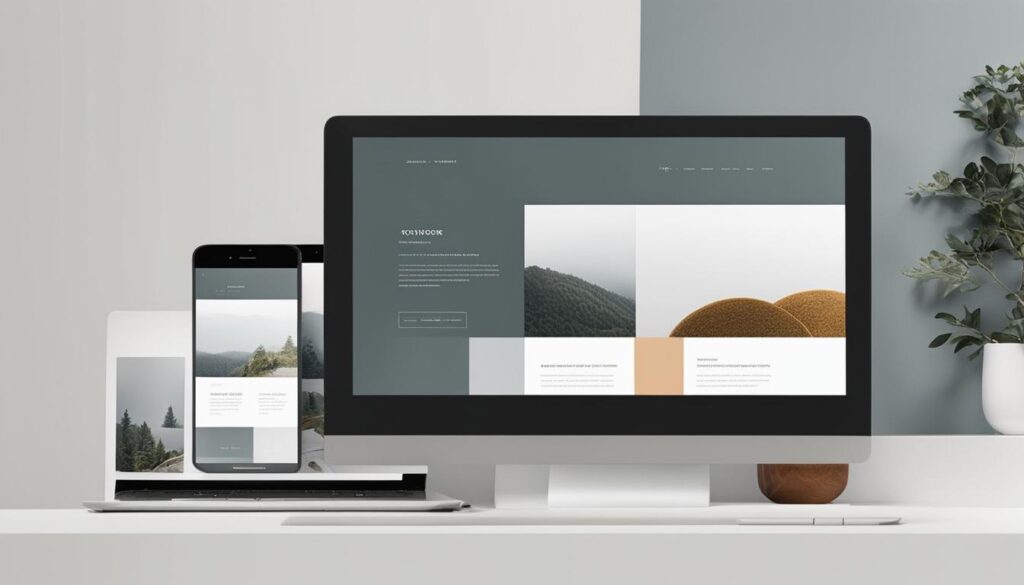
When it comes to minimalist web design, there are several key elements that contribute to its clean and effective aesthetic. Let’s explore these elements in detail:
- Limited Color Palette: Minimalist websites often employ a neutral or monochromatic color palette. This helps create a clean and uncluttered look, allowing the focus to be on the content and essential design elements.
- Typography: Typography plays a vital role in minimalist web design. Simple, readable fonts are preferred, as they complement the overall design and maintain a cohesive visual style.
- Plenty of White Space: White space, also known as negative space, is crucial in minimalist design. It helps create a sense of balance and harmony while allowing key elements to stand out. The strategic use of white space helps create a visually pleasing layout.
- Focus on Functionality: Functionality is a fundamental aspect of minimalist web design. Every element serves a purpose and has a specific function, contributing to a seamless user experience. Unnecessary elements are eliminated, allowing for a streamlined and efficient website.
Incorporating these key elements into your minimalist web design can result in a visually appealing and highly functional website. By adhering to a limited color palette, choosing appropriate typography, utilizing white space, and prioritizing functionality, you can create a clean and engaging user experience.
Purposeful Expression and Form in Minimalist Design
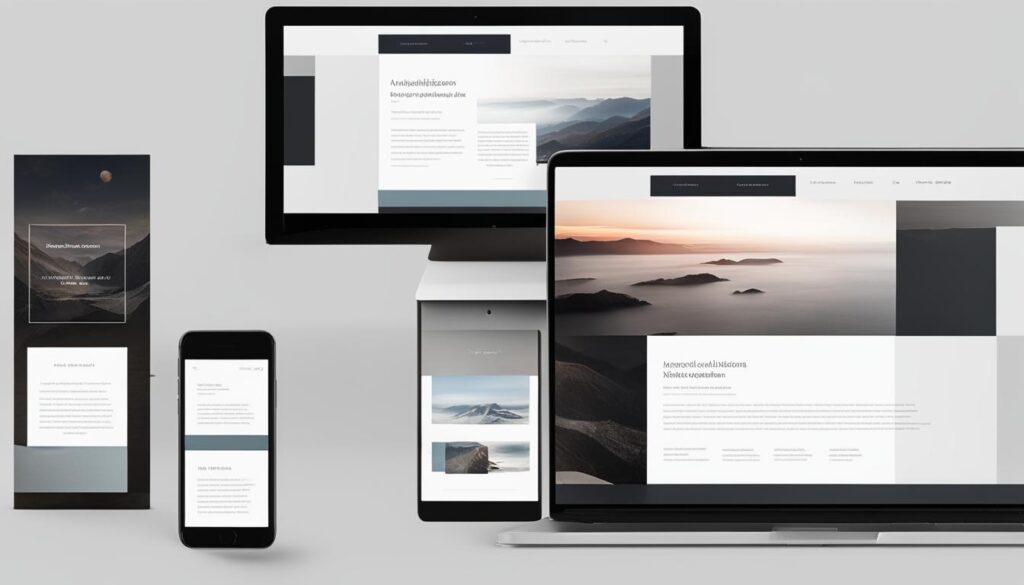
Purposeful expression and form are integral to the success of minimalist design. Every element within a minimalist design carries meaning and contributes to the overall narrative. Through careful consideration of choices such as color, spacing, and element placement, designers can effectively convey specific messages and evoke desired emotions. The marriage of form and function is what makes minimalist design visually captivating and impactful, leaving a lasting impression on users.
For example, in a minimalist website, the strategic use of white space can create a sense of elegance and sophistication, allowing key elements to stand out. By employing a limited color palette, designers can achieve a harmonious and cohesive aesthetic, reinforcing the minimalist principles of simplicity and order. Typography choices can also convey a sense of personality and style while maintaining readability and complementing the overall design.
Consider the following minimalist web design examples:
“Soul & Spice Co.”
“Pantry”
“Nature Magazine”
These examples showcase how purposeful expression and form come together to create visually stunning and functional websites that align with minimalist design principles. The deliberate use of colors, typography, and whitespace in these designs emphasizes the intention behind every element, effectively guiding users through the narrative and creating an immersive and engaging experience.
The purposeful expression and form in minimalist design not only elevate the visual aesthetics but also enhance the usability and user experience. By eliminating unnecessary elements and focusing on what truly matters, minimalist design empowers users to navigate seamlessly and engage with the content effortlessly. This deliberate approach to design cultivates a sense of trust and professionalism, leaving a positive and memorable impression on website visitors.
Unlocking the Potential of Minimalist Design:
- Enhance user engagement through purposeful color choices that evoke desired emotions
- Guide users’ attention through strategic placement of elements and use of whitespace
- Create a cohesive and visually appealing design with a limited color palette
- Elevate readability and user experience with carefully selected typography
- Efficiently communicate information and brand identity through minimalist design
By embracing purposeful expression and form in minimalist design, designers can create websites that captivate users and effectively communicate the intended message. As we continue to explore the depths of minimalist design principles, let’s dive into the innovations and trends driving the modern minimalist movement.
Modern Minimalism: Innovations in Minimalist Design
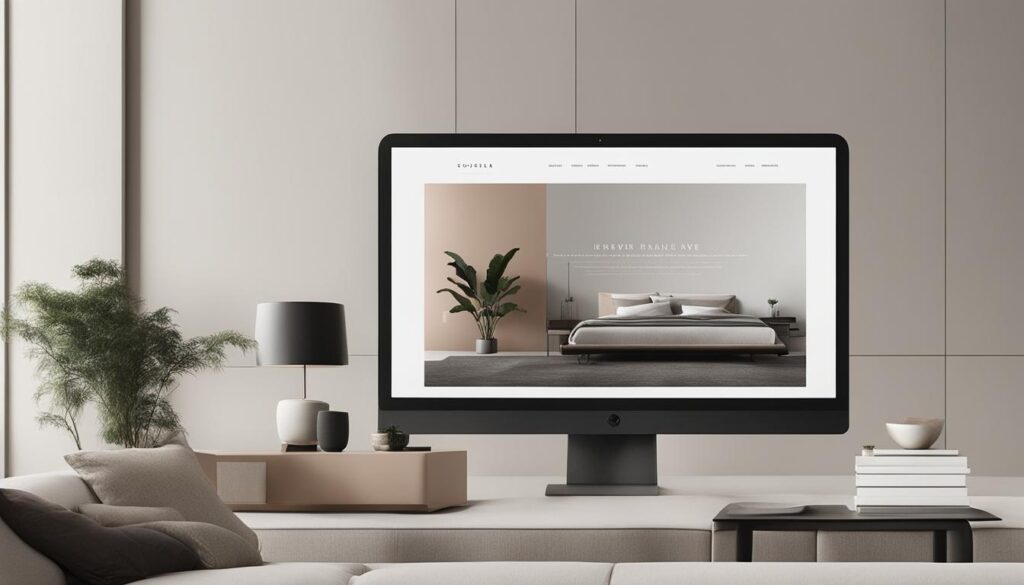
Minimalist design continues to evolve, embracing new technologies and innovative approaches. With the rise of digital platforms, designers now have the opportunity to incorporate dynamic elements into their minimalist web designs, elevating the overall user experience to new heights.
One of the key innovations in minimalist design is the integration of animations. By adding subtle animated effects to the user interface, designers can enhance the visual appeal and engage users in a more interactive and captivating manner. These animations can be used to highlight important elements, guide user attention, or provide delightful microinteractions.
Another innovation is the use of interactive elements. By incorporating interactive features such as collapsible menus, tabbed content, or interactive sliders, designers can create a more engaging and dynamic user experience. These interactive elements not only enhance usability but also bring an element of surprise and delight to the minimalist design.
Responsive design is also an important innovation in minimalist web design. With the increasing use of mobile devices, it is crucial for websites to adapt seamlessly to different screen sizes. Responsive design ensures that the minimalist design remains visually appealing and functional across various devices, enhancing the overall user experience.
“Minimalist design is not about limitation, but about finding creative solutions within a simplified framework.”
The integration of these cutting-edge innovations into minimalist design not only adds a modern twist but also expands the possibilities for creativity and expression. Designers can now push the boundaries of minimalist design, creating visually stunning websites that captivate users while maintaining the core principles of simplicity and functionality.
As minimalist web design continues to evolve, designers are increasingly inspired to experiment and push the boundaries of creativity. By staying abreast of the latest trends and adopting these innovative approaches, designers can create minimalist web designs that are not only visually striking but also deliver exceptional user experiences.
Conclusion
Minimalist web design principles guide us in creating visually appealing and highly functional websites that prioritize content and enhance user engagement. By focusing on simplicity and functionality, we can offer a clean, streamlined, and efficient user experience.
Embracing the beauty of minimalist design allows us to eliminate unnecessary elements and focus on what truly matters. The use of white space, a limited color palette, and simplified navigation create a clean and uncluttered look, making it easier for users to navigate and find the information they need.
With purposeful expression and form, every element in a minimalist design carries meaning and contributes to the overall narrative. By carefully considering choices such as color, spacing, and placement, we can convey specific messages and evoke emotions, creating visually stunning websites that captivate hearts.
Let us elevate our creativity to new heights by embracing the minimalist web design principles. By prioritizing simplicity, functionality, and purposeful expression, we can create websites that stand the test of time and provide our users with an exceptional online experience.
FAQ
What is minimalist web design?
Minimalist web design is a design approach that emphasizes simplicity and functionality. It focuses on eliminating unnecessary elements and creating a clean, streamlined, and efficient user experience.
What are the benefits of minimalist web design?
Simplicity in web design improves the user experience by making it easy for users to navigate the website and find the information they need. It also contributes to faster load times and allows for a stronger focus on content.
What are the key principles of minimalist web design?
The key principles of minimalist web design include the use of white space, a limited color palette, simplified navigation, and visual hierarchy to guide users’ attention. Typography also plays a significant role in minimalist design.
How do I implement minimalist web design?
To implement minimalist web design, start by defining the content and goals of your website. Eliminate unnecessary elements and focus only on what enhances the user experience. Simplify the layout, choose the right colors and typography, and test and refine the design.
Is minimalist web design boring?
No, minimalist web design can be vibrant and visually stunning. It challenges designers to be more thoughtful and intentional in their choices, enhancing creativity.
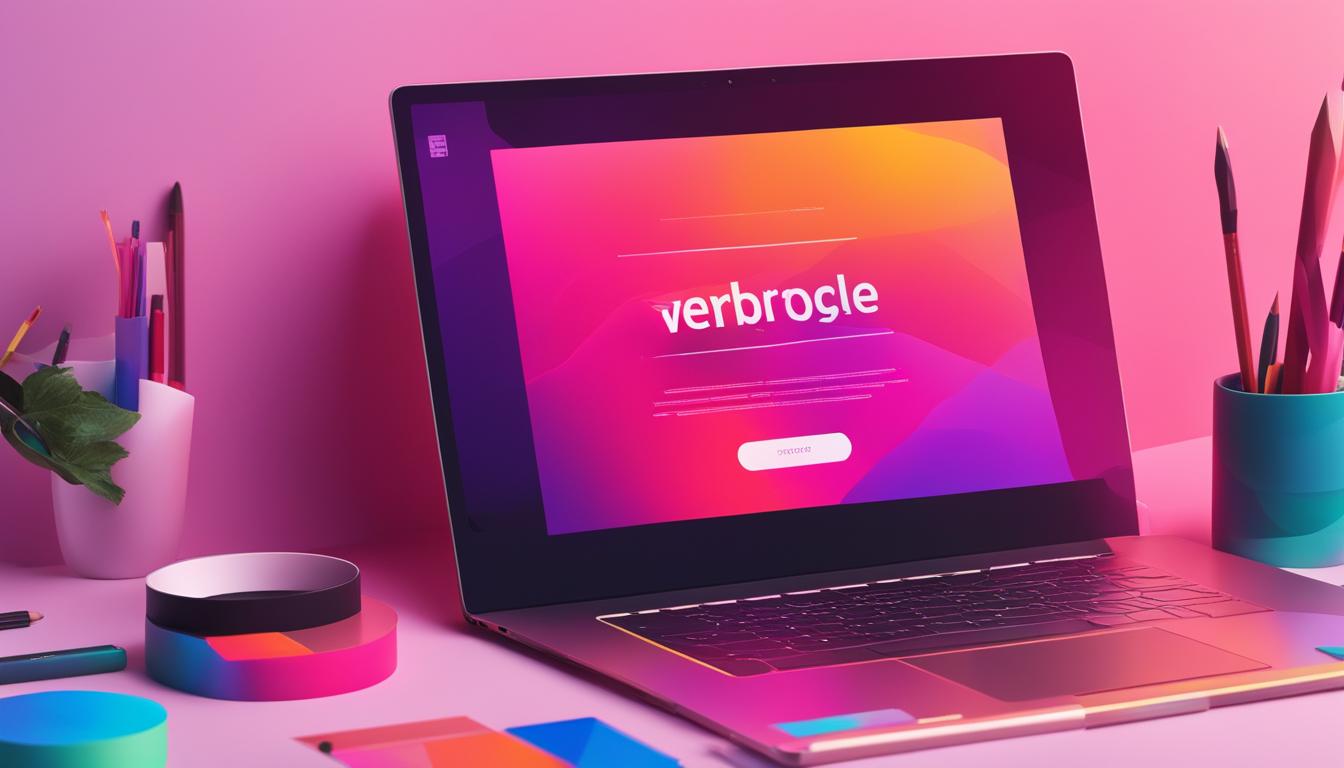
Leave a Reply